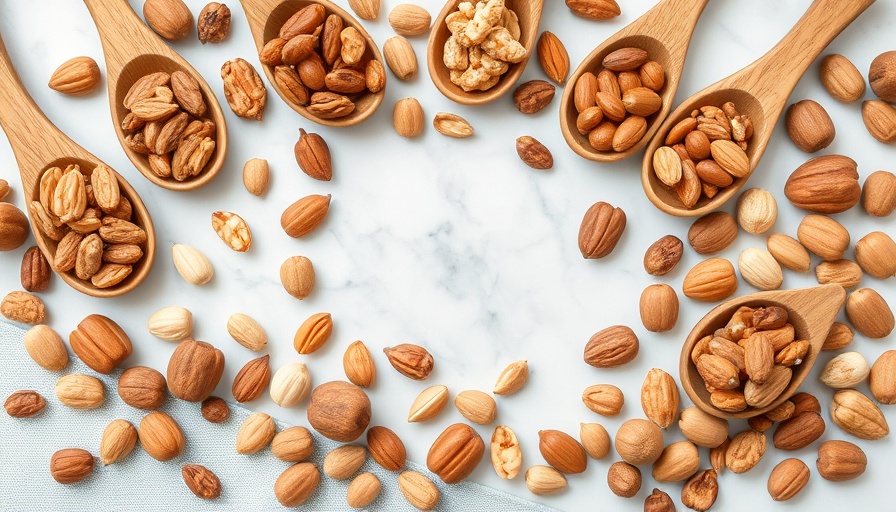
Understanding Nut Calories: Essential Nutritional Insights
Nuts are often praised as nutritional powerhouses packed with healthy fats, protein, and fiber. However, not all nuts are created equal when it comes to caloric content. For gym owners and fitness trainers, understanding these differences is crucial in helping clients make informed dietary choices. A recent analysis of the caloric values in nuts reveals that portion sizes and types can greatly influence a diet plan.
Caloric Variance Among Common Nuts
The caloric content of nuts varies significantly. For instance, chestnuts hold the title for the lowest calories at 213 calories per 100 grams, while macadamia nuts come in at a whopping 718 calories for the same serving. This variation mainly stems from fat content; chestnuts are lower in fat and high in carbohydrates while macadamia nuts are rich in healthy fats.
For those on a weight management journey, nuts can be incorporated into diets wisely. High-protein nuts like almonds (575 calories) and pistachios (557 calories) can help satisfy hunger and maintain energy levels. However, they should be consumed in moderation to avoid excess caloric intake.
The Importance of Nut Quality
When considering nuts, the quality of the fat is as important as its quantity. Nuts like macadamia and hazelnuts contain monounsaturated fats, which are known to support heart health. Conversely, nuts high in polyunsaturated fats, like walnuts and Brazil nuts, should be consumed raw to avoid oxidative damage that occurs during roasting.
Trainers can educate clients on the types of fats present in various nuts, encouraging the selection of higher-quality fats that promote long-term health without unnecessary calories.
Incorporating Nuts into a Balanced Diet
For fitness enthusiasts, nuts can serve as a portable snack. However, it's vital to understand appropriate serving sizes. A handful (approximately 30 grams) of nuts is a more reasonable portion compared to consuming them by the cup. This keeps caloric intake in check while still benefiting from the protein and fiber they provide.
Using visual representations of what 100 calories of different nuts looks like can aid trainers in conveying this information effectively to their clients, reinforcing healthy eating habits.
Future Trends in Nut Consumption
As health trends continue to evolve, the popularity of nuts as nutrient-dense snacks is expected to rise. In conjunction with other snacks, nuts can be promoted as part of a balanced diet that emphasizes moderation and diverse food choices for energy and satisfaction.
Future predictions suggest that with increased awareness of their health benefits, including the potential for weight management and satiety, nuts will become a staple in diets across fitness communities.
Actionable Insights for Fitness Professionals
For gym owners and fitness trainers, the takeaway is clear: educate clients on the caloric content of nuts and guide them in selecting values that fit their nutritional goals. This knowledge empowers individuals to make more informed decisions in their diets, ultimately supporting better health outcomes.
Make it a point to educate your clients not just on what to eat but on how much to consume by suggesting appropriate portion sizes and discussing the quality of different nuts. Enthusiastically integrating this understanding into your training sessions can enhance your clients' overall health journeys.
 Add Row
Add Row  Add
Add 


Write A Comment